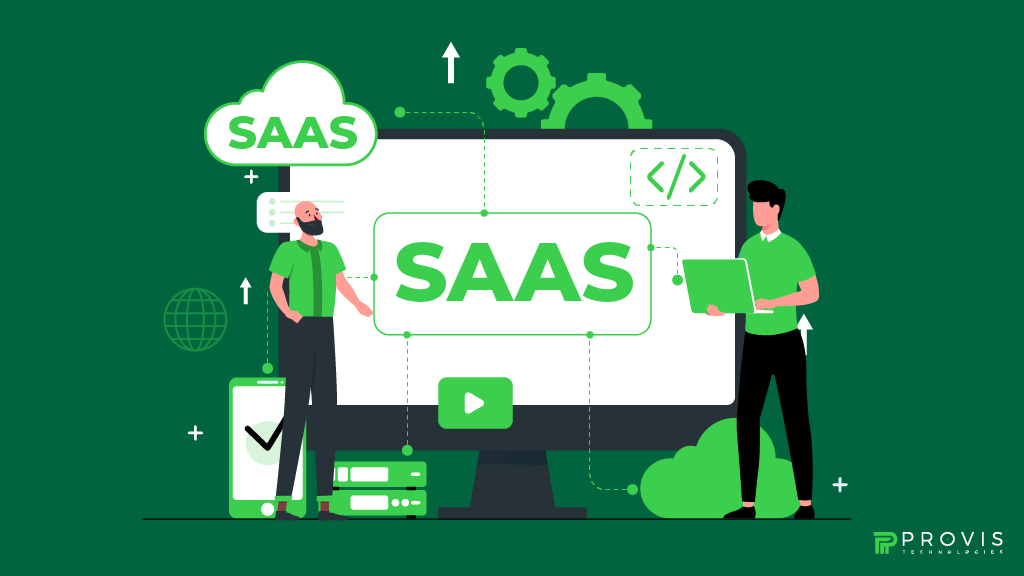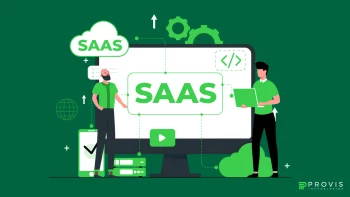If you build or run a SaaS product, you have likely lived through that nerve-racking moment when your system slows down just when you need it to shine. Maybe it was during your biggest launch yet. Maybe it was a viral post that sent traffic through the roof. Or maybe it was a quiet weekend when no one noticed a memory leak growing behind the scenes.
One early-stage SaaS team shared how they lost hundreds of users during a live demo because a single background job blocked their main API calls. Another founder talked about a marketing campaign that drove five times more traffic than expected, but their database could not handle the load, causing hours of downtime on what should have been their best day.
Stories like these happen more often than you think. The truth is, performance bottlenecks do not have to limit your growth. They can be found, understood, and fixed with practical steps that do not require fancy hardware or a huge team.
In this guide, you will find real examples, practical tips, and clear ways to keep your SaaS fast and reliable, even during your biggest moments.
1. Proactive Monitoring & Real-Time Alerts
See problems before your customers do
Imagine a SaaS platform for scheduling appointments that suddenly slows down every Monday morning. New users abandon sign-up halfway through. The hidden problem? An overnight scheduled task that overlapped with peak hours, causing slowdowns that only came to light after dozens of angry support tickets.
Proactive monitoring tools like New Relic, Datadog, or Prometheus help you spot these patterns before they hurt you. By setting thresholds for response time, CPU usage, and error rates, you can get alerts when things go wrong.
Action Tips:
- Set clear thresholds for critical metrics like response time and error rates
- Use synthetic monitoring (which simulates real users to test important flows) to test important user journeys
- Add distributed tracing (following a single request as it moves through your system) so you can follow requests across services
- Map dependencies to see how one issue can affect the entire system
2. Load and Stress Testing
Know your limits before your users find them
A growing e-commerce SaaS assumed its cloud auto-scaling would handle Black Friday traffic. They ran no stress tests. Traffic doubled, then tripled, until the payment gateway throttled connections and shoppers saw spinning wheels instead of confirmation messages.
Load testing helps you understand what breaks and why. Tools like Gatling, k6, or Locust simulate thousands of users signing up, paying, or uploading files so you see how your system holds up.
Action Tips:
- Run baseline tests to measure normal performance
- Do spike tests to check how you handle sudden surges
- Use soak tests for long, heavy loads to reveal leaks
- Add these tests to your staging workflow, not just once a year
3. Database Optimization and Caching
Your database can help you fly or drag you down
Imagine a busy online quiz platform on exam day. Hundreds of students log in at the same time, ready to start their timed test, but they are met with 15 second delays every time they load a question. Some students miss answering within the time limit, others get frustrated and abandon the test.
The reason? A single missing index in the questions table meant the database scanned thousands of records for each question load. Once the team added that missing index, load times dropped to two seconds and the flood of complaints stopped overnight.
Databases often become your biggest bottleneck because they are the backbone of almost every request. Good indexing and smart caching can keep your SaaS smooth, even during your busiest moments
Action Tips:
- Review query execution plans for slow spots
- Add read replicas (extra copies of your database to handle heavy read traffic) for heavy read operations
- Consider splitting your database into smaller parts to handle large data sets.
- Use multiple caching layers:
- App-level caching for frequent queries
- CDN caching for static files
- In-memory caches like Redis for sessions and lookups
Read More: What is Micro SaaS & How to Build a Micro SaaS in 2025
4. API and Backend Efficiency
Every millisecond counts
Your APIs tie your whole SaaS together. If they are slow, everything feels slow.
For example, a productivity SaaS noticed that when users exported big reports, the heavy requests blocked normal actions like saving tasks. By moving exports to background jobs and adding proper pagination (splitting large data into smaller pages), they cut response times in half.
APIs work best when they stay light and responsive.
Action Tips:
- Track response times and errors for each endpoint
- Use pagination for large datasets
- Run heavy tasks asynchronously
- Compress API payloads when possible
- Add rate limits (rules that limit how often someone can make requests) to prevent overload and abuse.
5. Profiling Code and Background Jobs
Spot hidden drains early
Sometimes the biggest performance issues hide deep in your code or background tasks. For example, one subscription SaaS noticed random crashes during peak hours. The cause? An unoptimised image-processing task that quietly ate up memory every time it ran. They only found it after using a code profiler that revealed inefficient loops and poor memory handling.
Profiling tools help you dig into how your code really behaves under load, so you can fix hidden drains before they affect customers.
Action Tips:
- Use profiling tools (which analyze where your code uses most resources) like Blackfire or built-in profilers
- Focus on critical parts like heavy loops and algorithms
- Watch for memory leaks and unneeded object creation
- Monitor background job queues to keep them efficient
6. Front-End Performance and UX
A fast backend does not fix a slow frontend
Even with a solid backend, a sluggish frontend can make your entire app feel slow. One SaaS CRM had well-optimised servers, but the homepage still took seven seconds to load on a basic mobile connection because of large JavaScript bundles and too many files loading at once. This is a common trap for SaaS teams that overlook what happens in the browser.
Simple changes can make a big difference. Deferring non-critical scripts, splitting code into smaller parts, compressing assets, and using lazy loading for images or videos can all cut load times. Real User Monitoring (RUM) helps you see how your site performs on real devices, so you catch slow spots that synthetic tests might miss.
Action Tips:
- Minimise render-blocking scripts and CSS that delay the first paint
- Use lazy loading for images, videos, and other heavy elements
- Split large code bundles into smaller parts to reduce initial load
- Compress and minify files to make them faster to transfer
- Set up RUM to keep an eye on performance for real visitors
7. Geographic Distribution and CDN Usage
Serve data closer to your customers
Serving content close to your customers can make a big difference, especially if your SaaS has users around the world. One SaaS platform that supported global teams improved page load times in Asia by 40 percent simply by adding a CDN and setting up local read replicas near their biggest user base.
If your users are spread out, your hosting should be too. Using a CDN for static files, caching dynamic content at the edge, and deploying app instances in multiple regions help reduce delays and keep your app feeling fast no matter where your customers log in from.
Action Tips:
- Use a CDN for static files
- Cache dynamic content at the edge where possible
- Deploy app instances in regions where you have many users
- Use DNS routing to direct users to the nearest server
8. Performance Engineering Culture and SLAs
Performance is everyone’s job
Building a culture of performance means making it everyone’s job, not just something for your ops team to fix when things break. One SaaS company did this by giving each team its own service-level objectives, so they could see how their work impacted uptime and response times. Instead of reacting to outages, they tracked trends early and improved uptime by 30 percent in just a year.
When performance goals are visible and shared, teams are more likely to catch small problems before they become big ones. Clear SLAs, dashboards with real-time metrics, and regular reviews help everyone stay focused on keeping your SaaS reliable as you grow.
Action Tips:
- Set and share clear SLAs and KPIs
- Display performance metrics on team dashboards
- Run performance reviews after big releases
- Offer training so your devs know best practices
Also Read: 10 Must-Know Web Performance Optimization Techniques in 2025
9. CI/CD with Performance Gates
Catch problems before your customers do
A finance SaaS once shipped a new dashboard without testing its impact on speed. It looked great but doubled response times for users overnight. After that painful lesson, they started running performance checks on every pull request to catch slowdowns early.
Adding automated performance tests to your pipeline means you can spot issues before they reach production. This helps you ship new features with confidence, knowing they won’t drag down the experience for your users.
Action Tips:
- Run automated load tests in staging
- Block deploys that fail performance standards
- Use canary releases (launch new features to a small user group first) to test impact with real users.
- Roll back if performance drops
Must Read: 8 Steps to Choose the Best Tech Stack for Scalable SaaS
10. Next Steps
Performance is not a one-time fix. It needs ongoing attention as your product and user base grow. Small slowdowns can appear any time you add new features, onboard more users, or expand to new regions, so staying proactive is key.
Start this month with practical actions:
- Set up real-time monitoring and alerts for your top five user flows so you catch problems early.
- Run realistic load and stress tests that include unusual scenarios like API limits, database locks, or heavy file uploads.
- Identify your slowest API endpoint or database query and optimize it, then share what you learn with your team.
Keep improving as you scale:
- Add automated performance tests to your CI/CD pipeline so you do not ship unexpected slowdowns.
- Build shared dashboards that show live response times, error rates, and usage trends so everyone stays aware.
- Define clear Service Level Objectives for critical flows like sign-up, checkout, or reporting, and review them regularly.
- Profile your code and background jobs to catch hidden CPU or memory drains before they affect users.
- Consider multi-region deployments and smarter caching if your customers are spread across different geographies.
When you build these habits into your development culture, you spend less time putting out fires and more time delivering features your customers actually want.
At Provis Technologies, we help SaaS teams spot hidden bottlenecks and keep performance strong as they grow. If you’d like more inspiration, explore our recent SaaS performance stories and see what’s possible for your product. And whenever you need an extra pair of eyes on your next scaling challenge, we’re here to help.
Written By
Author's Picks
- AI in SaaS Product Development: Revolutionizing Software for the Future
- 19/02/2025
- How to Decide Which Features to Focus on in SaaS?
- 24/03/2025
- Everything You Need to Know about SaaS E-commerce Platforms
- 27/03/2024
Categories
- AI for Startups
- AI in Web Development
- AI Integration
- AI Platforms
- AI Prompt
- AI Tools
- AI Trading Software
- Android App
- Android vs iOS Development
- Angular
- API
- API Development
- App
- app development
- App Idea
- App User Feedback
- Application
- Artificial Intelligence
- Audit Services
- Automotive Industry
- Awards and Recognition
- Business Consulting
- Business Website
- Chatbots
- CRM
- CRM for Financial Advisors
- Custom CRM
- Custom SaaS
- Custom Website
- Customer Service
- dashboard design
- Developing a Mobile App
- Digital Business
- E-commerce
- EMR Integration
- Finance
- Financial Advisors
- Financial Advisors
- GIT
- Health Insurance
- iOS App
- iOS App Development
- IoT Mobile App Development
- IoT Platforms
- IT Audit Services
- IT Consulting
- IT Strategies
- Java Development
- Laravel
- Lean Canvas
- Learning Management System
- Logistics Apps
- Mobile App Development
- MVP
- Native App
- News Aggregator Site
- OTT
- Outsourcing IT
- Payment Gateway
- predictive analysis
- Product Launch Strategy
- Progressive Web App (PWA)
- Prototype
- Recommender Systems
- Ruby
- SaaS
- SaaS Application
- SaaS Business
- SaaS Company
- SaaS Development
- SaaS Product
- SaaS Project
- Sales Funnel
- SEO
- Shopping Cart
- Software Development
- SSL and TLS
- Startup Checklist
- Technology
- Tetradic Color Scheme
- UI/UX Design Company
- Unit Testing
- User Flow
- User Testing
- Web Development
- Web Performance Optimization
- website Maintenance Services
- Website Migration Service
- Website Speed Optimization
- WooCommerce
- WordPress





